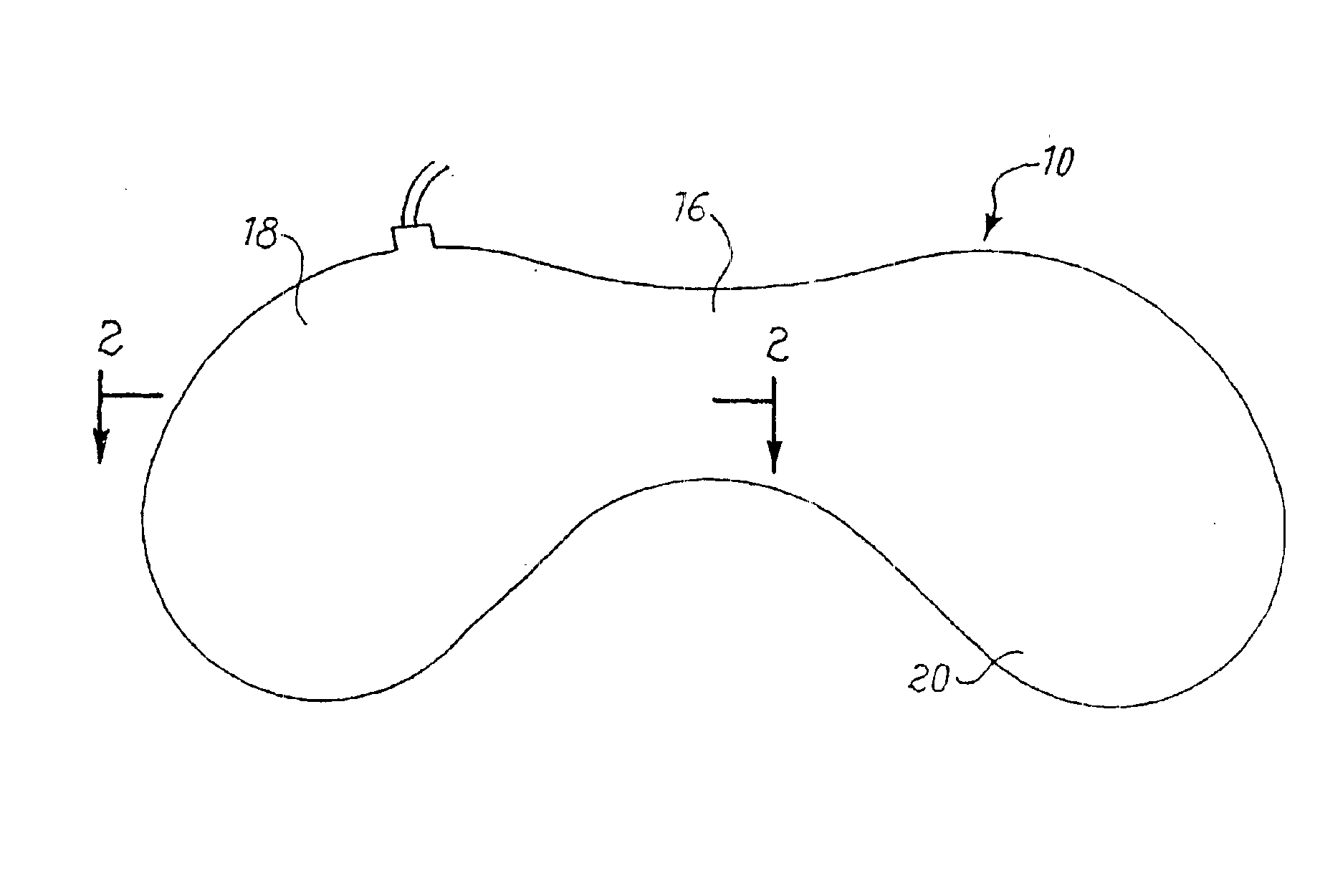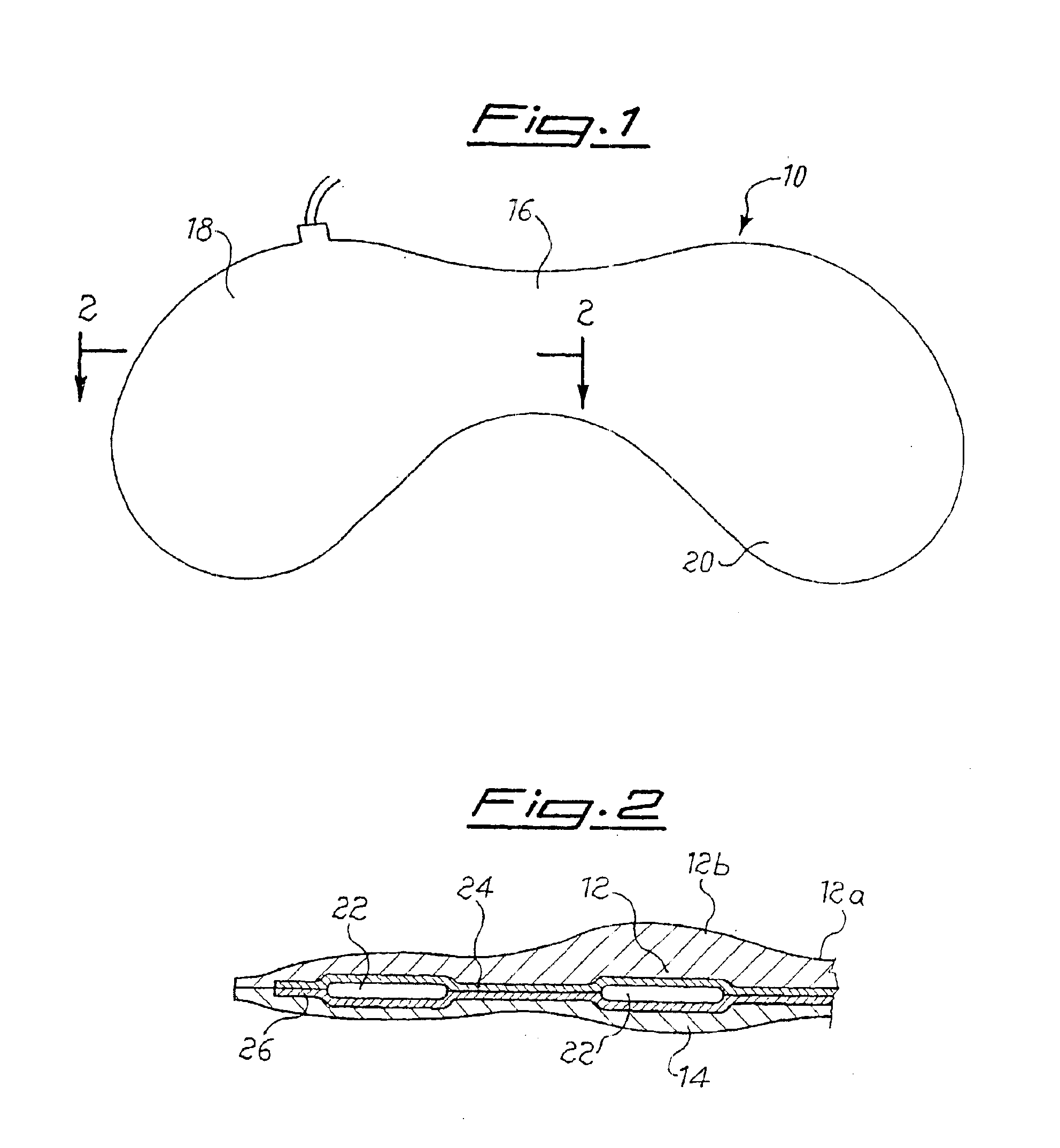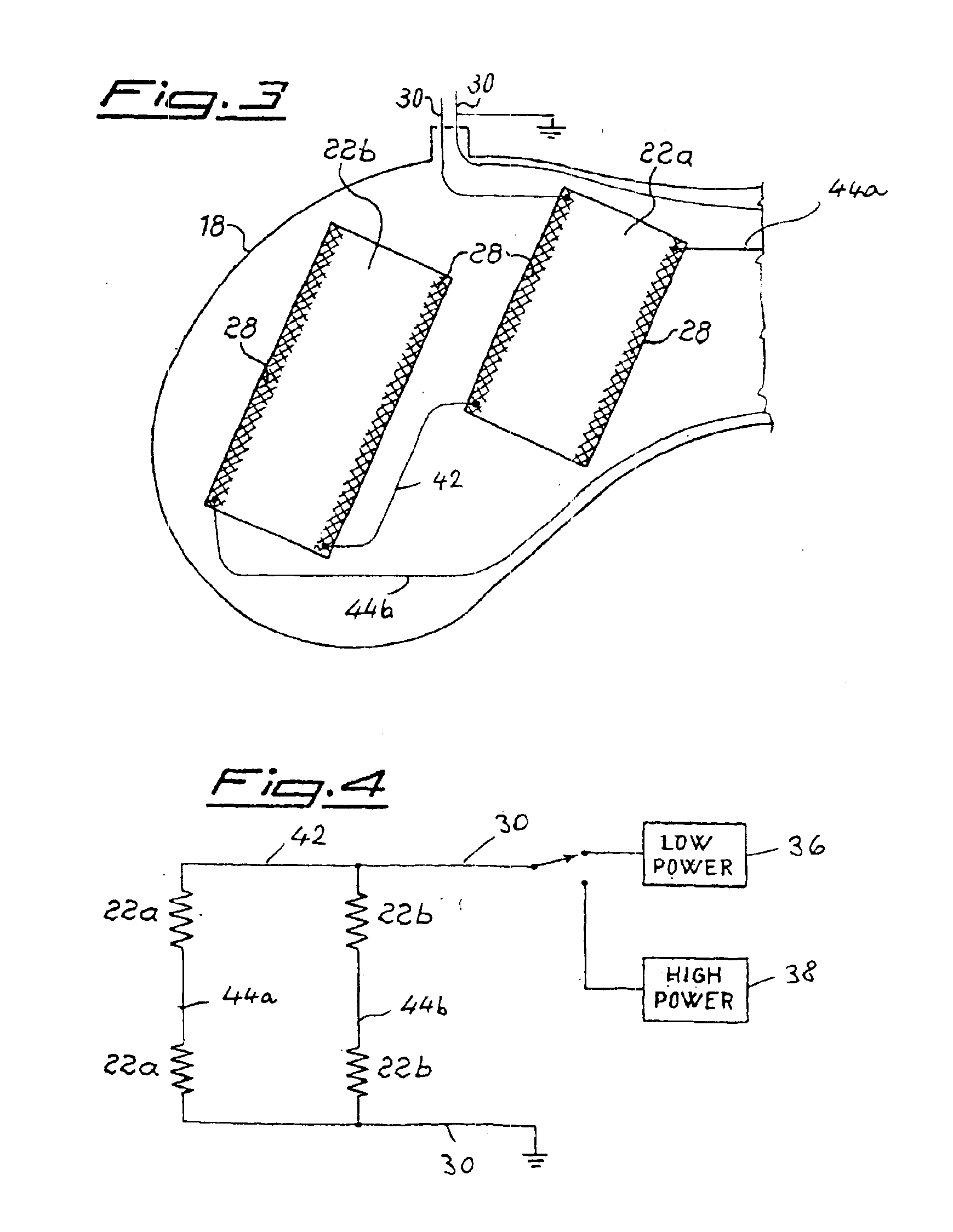Heating insert for use with footwear
a technology for inserts and footwear, applied in the direction of skis, snowboard bindings, sports apparatus, etc., can solve the problems of excessive heat applied to the thinnest parts of the liner, discomfort or worse for the user, and inability to accept thick padding in the liner, etc., to achieve good thermal transfer properties, high electrical resistance, and high heat conductive material
- Summary
- Abstract
- Description
- Claims
- Application Information
AI Technical Summary
Benefits of technology
Problems solved by technology
Method used
Image
Examples
Embodiment Construction
Referring to FIGS. 1 and 2, a combined liner and insert 10 comprises two layers 12 and 14 of a thermally formable plastic foam of a type known per se. The liner / insert 10 is of a wing shape having a narrow portion 16 which wraps around the back of the ankle in use, and a pair of wings 18 and 20 which overlie the sides of the ankle and the sides of the instep.
It is worth to notice that in the field of the ski boots the word liner normally refers to the whole shoes placed inside the outer shell and fully containing the foot from the toe to the heel. For the purposes of the present description as liner reference shall be made to the part encompassing the ankle and the rear part of the foot, as well as the instep, because this is the main part bearing the padding to be thermoformed.
As seen in FIG. 2, the foam layer is of variable thickness with a thin portion 12a behind the ankle and a thick portion 12b over the ankle bone.
Located within the layers 12 and 14 are electrical heating eleme...
PUM
 Login to view more
Login to view more Abstract
Description
Claims
Application Information
 Login to view more
Login to view more - R&D Engineer
- R&D Manager
- IP Professional
- Industry Leading Data Capabilities
- Powerful AI technology
- Patent DNA Extraction
Browse by: Latest US Patents, China's latest patents, Technical Efficacy Thesaurus, Application Domain, Technology Topic.
© 2024 PatSnap. All rights reserved.Legal|Privacy policy|Modern Slavery Act Transparency Statement|Sitemap



